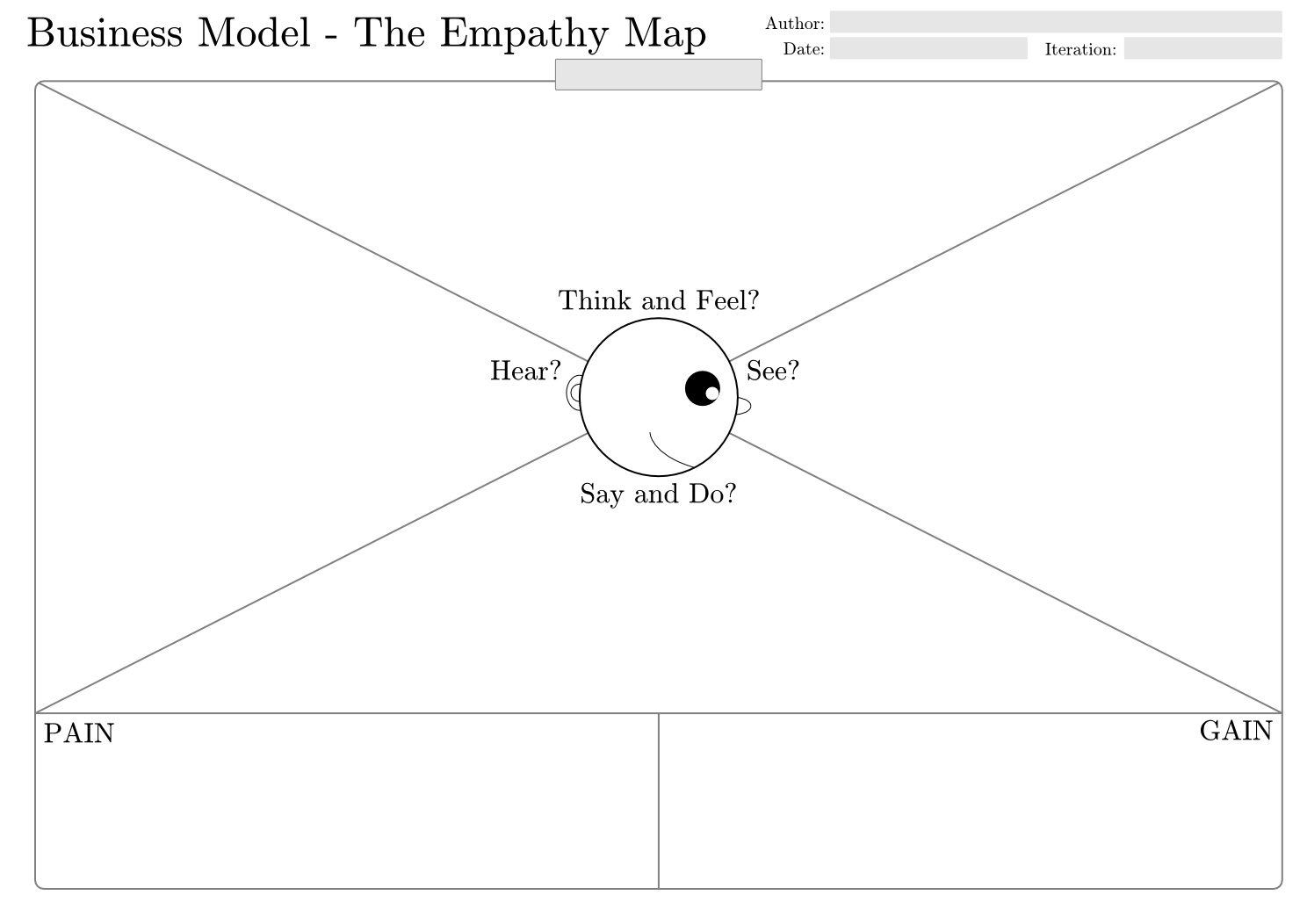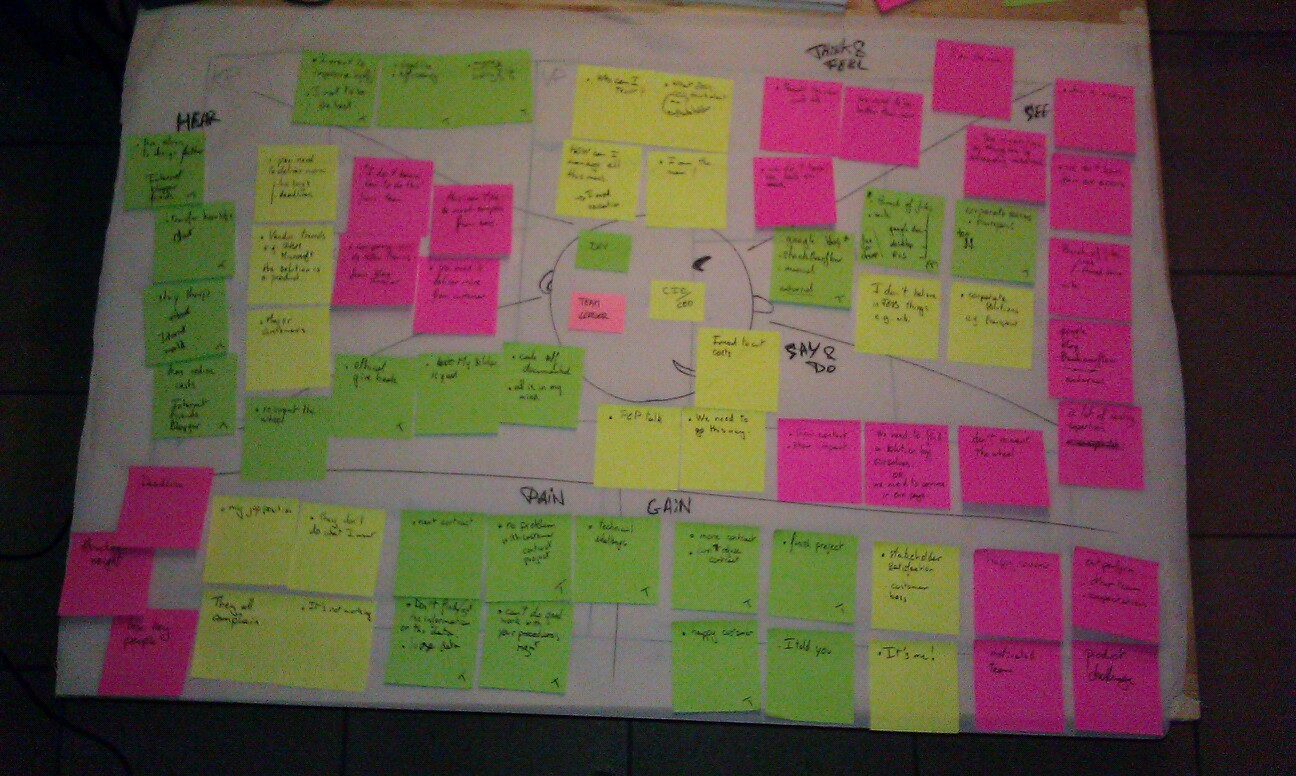Who are our customers?
This is an archive of blog post I wrote during my first venture (beginning of 8thcolor).
When we sketched our first business model canvas, we quickly hit into this question. We quickly answered: "They are the developers". But when considering the value propositions, we realized two facts:
- their needs are not the same, and
- the developer is not always the buyer.
We're then able to identify 3 segments:
- the lone developer (freelance, hobbyist),
- the small team, the IT startup, and
- the big corporate and its large bunch of developer.
First step, first lesson: it is not a trivial question. Without knowing our customers, we cannot imagine value propositions, channels, revenue streams, relationships. There are no business at all.
Thanks to the Business Model Generation book, now, we can try to catch customers' mind, to understand them, to perceive through their eyes. This can be done with the XPLANE's Empathy Map.

It consists in a framework helping you to perceive, feel, think, and act as your customer by asking clear and simple questions:
- What does he see?
- What does he hear?
- What does he really think and feel?
- What does he say and do?
- What is his pain?
- What does he gain?
At first sight, we thought: "this is trivial". But, after trying to answer those questions, we quickly understand it is not trivial at all. More important, we understand our a priori about our customers are biased by us.
After reproducing the map on a A3 sheet, we've decided to do the exercise for our three customer segments: the lone dev, the project leader and the CIO. We've used Post-it of three colors, one for each customer segment. We've selected a question summarizing the kind of pain we address. And we've debated and answered all questions, one after the other, for each customer segment. Sometimes, we've got an answer for another customer segment and we've just put it on a Post-it of adequate color. The whole process lasted about 3 hours and allow us to produce the following empathy map:

The empathy map help us to:
- deeply understand who possibly are our customers and their environment,
- confirm there are more than one possible customer segments,
- identify different kind of profiles inside each segment,
- link value propositions with customer segments (especially thanks to the pain and gain sections), and
- realize it is not, at all, a trivial question.
The last point pushes us to plan interviews of customers. This will help us to iterate over this map and, by doing so, our business models.
If you have any comment, question, or feedback, please share them with me.